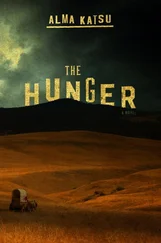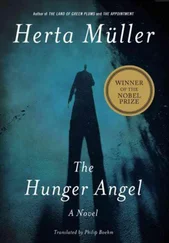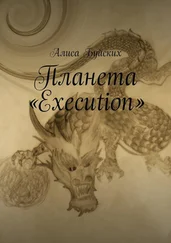We decided not to say anything to anyone about our trip to the house on the hill. The mystery of Ivan’s disappearance remained unsolved until one day in April.
ICANNOT find the words to describe what my eyes saw in the spring of 1933, but since those awesome memories still haunt me, I shall endeavor to convey my recollections of the sufferings and deaths of my fellow Ukrainians.
World War II was a reality, and I was a part of it. I saw the multitude of dead and mutilated bodies; I heard the cries of despair, and the moans of agony all around me. Day after day, I felt cold and hunger. I was constantly in fear of death. But all of that is now seen through the mist of time. In the haziness of those memories, I see a dim spark of light. This spark is the recognition that those sufferings were caused by war, that I and others at that time had a chance to fight for our lives, to defend ourselves no matter how slim those chances might be. Above all, I realized that while fighting in the war, I had not been completely abandoned. The military was always there with daily food rations, no matter how deficient in quantity and quality. We were also clothed (after a fashion), and barracks as such for sleep when possible were provided. The sufferings of war pale in comparison with the events in our village, all of which remain in my memory as absolute in horror.
Those of us who were still alive harbored a secret and final hope that the coming of the spring of 1933 would bring us some relief. We thought that the new vegetation would help us live through the long months of waiting for the new bread. Nourished by this hope, we were able to carry on until we saw the first signs of green. Sadly, however, many of the villagers were no longer alive by the time the long-awaited spring finally arrived. And many of those who lived long enough to see the passing of winter found their death in the very vegetables and grasses they were so hopefully and patiently awaiting.
That spring of 1933 in Ukraine was unusually cold. In our region, the spring weather usually set in around the beginning of April. The snow would melt quickly, and the green blanket of vegetation would immediately appear in its place. But in 1933, snow was still visible everywhere in mid-April. An icy-cold wind blew continually. It would often bring heavy clouds of rain or snow, or both, and the village would sink deep into mud and slush again. Then a freeze would turn all that into knobs of dirty ice.
Starvation in our village now reached a point at which death was a desirable relief. Many houses around us had already been standing for a long time with no signs of life. As the snow slowly melted away, human corpses were exposed to view everywhere: in backyards, on roads, in fields. Those dead bodies constituted a pathetic problem for the living. As the weather warmed, they started to thaw and decay. The stench which resulted plagued us, and we could do nothing about it. The villagers who survived were unable to bury the dead, and no one from the outside seemed in a hurry to do it, so the bodies were just left wherever they happened to die. Those in the fields or in the forest, fell prey to wild animals; those in their homes became the prey of countless rats.
For the third time, the village was stricken with panic. Those who were fortunate enough to remain alive were in the depths of despair. The resources they possessed had been used up long ago. They all finally had to face the shocking truth that there was nothing to eat, and no hope of getting any help: that death from starvation was their imminent fate.
Most of these desperate villagers reconciled themselves to this fact. They stayed at home, and their conditions were indescribable. They were unkempt and haggard, and so weak that they could hardly drag one foot after the other. They just sat, or lay down silently, too feeble even to talk.
The bodies of some were reduced to skeletons, with their skin hanging grayish-yellow and loose over their bones. Their faces looked like rubber masks with large, bulging, immobile eyes. Their necks seemed to have shrunk into their shoulders. The look in their eyes was glassy, heralding their approaching death.
The bodies of others were swollen, a final stage of starvation. Their faces, arms, legs and stomachs resembled the surfaces of plastic balloons. The tissues would soon crack and burst, resulting in the fast deterioration of their bodies.
The thaw brought with it a new wave of beggars. Those who still had strength enough to move left their dwellings and took off in search of food. Old and young, mostly women and children, slowly moved from house to house dragging their rag-covered feet. They pleaded for food: a potato, or a piece of bread, or at least a kernel—a single kernel!—of corn. At the onset of the famine, I remember how the emaciated would come to the doorstep, often sobbing, and would ask for some spare food. If refused, they would excuse themselves politely and go away, apologizing for bothering us.
But this spring’s beggars presented an entirely different picture. These desperate people, numbed by cruelty and injustice as well as hunger, were no longer the modest, honorable small farmers they had been before. Their fear of starvation was so great that they lost all semblance of self-control, becoming more like wild, hungry beasts in their search for food. They no longer distinguished friends from enemies and were ready to commit even murder for a mere scrap. Their clothes had long ago turned to rags, and they themselves were worn out and exhausted to the point of collapse.
With protruding frightened eyes and outstretched hands, they would approach someone, but this time they did not plead: they were voiceless; they just cried. Often their heavy tears were mixed with fluid slowly oozing out of the cracks in their swollen faces. They whispered and begged for a crumb of bread.
Another sign of almost imminent death from starvation was the body lice, those small, flat, wingless, parasitic insects who were the constant companions of the wretched and impoverished. The starving villagers were no longer able to take care of their sanitary needs, nor had they strength to fetch water, let alone heat it in order to bathe themselves, or wash their clothes and their bedding. Those who still had strength could do some washing, but not properly because they had no soap. For a few years now, not a single bar of soap had been seen in the village. But, even if soap had been available, we could not buy it. First, we had no money; second, we were prohibited from buying any merchandise in the stores as our grain quotas had not been met. As a result, all of us were dirty and infected with lice.
As the limbs of a starving person turn cold with the approach of death, the lice begin to migrate to the warmer facial areas such as the eye sockets, ears, mouth corners, and nostrils. When this happened, it was an unmistakable sign that the starving person’s sufferings would soon come to an end.
The plight of the children was one of the most heartbreaking experiences for me during that time, and their pathetic faces, parched or swollen, and streaked with tears, will remain in my memory forever.
They could not understand why they couldn’t get a piece of bread or something else to eat. They were not able to comprehend what was going on in their own small world. Thinking of them still makes me tremble with horror. God is my witness that as I write these words, the paper is wet with my tears.
Not many children in our neighborhood had survived the terrible winter, but those who had were reduced to mere skeletons, too weak to cry. The heads on their small thin necks looked like inflated balloons. Their small bony arms and legs were like sticks protruding from their little bodies. Their stomachs were bloated to unusual proportions, and water flowed uninterruptedly from their genitals. Those childish faces looked prematurely aged and twisted. They resembled old folks: wrinkled, listless, and very, very sad. At their stage of starvation, they were in a constant stupor which is peculiar to those who suffer from extreme hunger. It seemed as if nature itself had conspired with the Communist regime to add a final touch of pathos and horror to the sufferings the children had to endure. Hair had started to grow on the faces of some, mainly on their foreheads and temples. I saw a few such children and they looked so strange to me—like creatures from another planet, and they left me with a feeling of helplessness and doom.
Читать дальше












